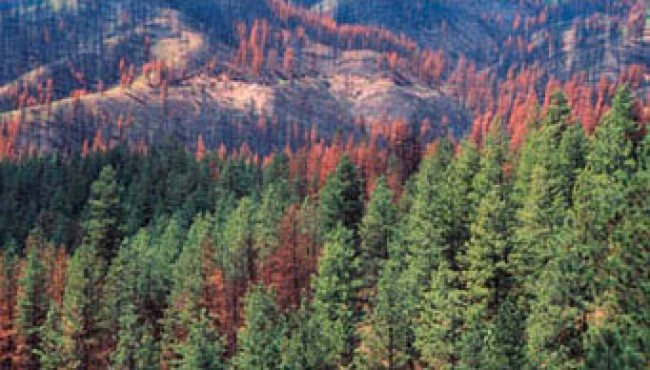The smoke that drifted into Western Washington last summer and obscured the Space Needle behind its cloak grabbed the attention of the metropolitan Puget Sound area. However, wildfires and forest health have been a high-profile legislative issue since the historic fire years in 2014 and 2015. This past session was no exception. A record-high amount of funding was provided to the state agencies for wildfire prevention and response and six separate bills were passed that helped address the issue to one degree or another. Of those bills, 2SHB 1784 ties together forest health investments and wildfire response in a new way.
Recent years have seen historic legislative gains in forest health investments, led by the Department of Natural Resources’ 20-Year Forest Health Strategic Plan. Wildfire prevention and the response has always been listed as one of the justifications for increasing forest health funding, but the line between those two issues have never been drawn as directly and succinctly as it is in 2SHB 1784. This bill directs the DNR to emphasize forest health treatments that are strategically planned to assist with wildfire response and to protect commercial lands from a spreading fire.
“I was on the ground this spring where the catastrophic Camp Fire ravaged through California,” said Mark Doumit, Executive Director of the Washington Forest Protection Association. “Strategically planned forest health treatments, like the ones directed in this bill, were responsible for slowing down that fire and saving countless acres, structures, and even lives from its path. It’s critical that the Legislature signal that these are the outcomes it expects as it increases investment in forest health treatments.”
The bill also directs new tools for fire response. It requires the DNR to identify areas where forest health treatments were undertaken and the location of public general transportation roads, public and private logging roads, water bodies, and other features on the landscape relevant in planning a fire response. Those details, together with existing cutover areas, must be included a GIS later for use by fire response personnel to assist in decision making.
2SHB 1784 was the latest in a series of wildfire bills sponsored by Rep. Joel Kretz of Wauconda.
“Rep. Kretz has been a dedicated voice in ensuring that the wildfires of summer are not forgotten during the winter when the Legislature is in session,” added Doumit. “He is one of the leading voices that bring the stories and experiences of living in fire country to Olympia to share with his colleagues from other parts of the state. It’s critical for forest landowners to have voices like his advocating for new wildfire policies and funding.”
